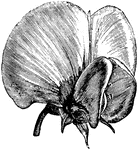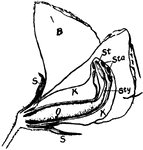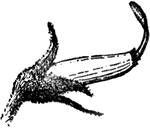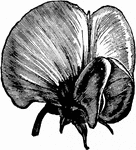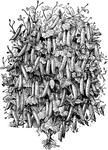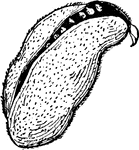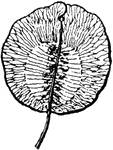Clipart tagged: ‘pea’
Bruchus Pisi
Pictured are the beetle of the natural size (a), and enlarged (b), and a pea (c) in which the hole of…
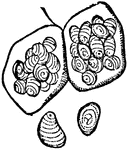
Starch Cells
"a, Starch cells of the Pea, showing grains of starch in the interior. b, Seperate starch grains, with…
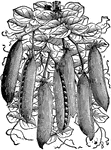
Rawson's Clipper
A species of peas that profusely covered with pods. The pods have one of the sweetest flavors of the…

Coffee-Tree Fowers
These are the pistillate and staminate flowers of Kentucky coffee-tree, (Keeler, 1915).
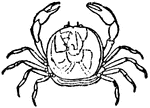
Pea Crab
The pea crab is a small crab in the family Pinnotheridae that lives symbiotically in oysters, clams,…
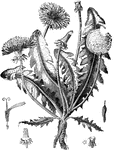
Common Dandelion
A large genus of flowering plants. It is popular amongst children attempting to blow the pedals off…

Locust Blossom Seeds
These are the seeds or racemes of the Locust blossoms, Robinia pseudoacacia,(Keeler, 1915).
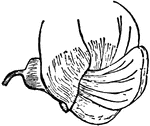
Pea
"Flower of the Pea (Pisum sativum), showing a papillionaceous corolla, with one petal superior, st,…
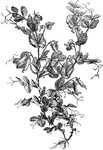
Garden Variety of Pea
Pictured is a garden variety of pea with flowers and pods in different stages of development.
Small Pea Pod
The small pea pod pictured is opened with two seeds developed. There are also the remains of two unfertilized…
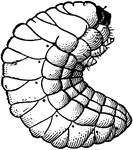
Pea Weevil
"The pea weevil is often found in peas in its larval state during summer and autumn, as a pupa in winter,…
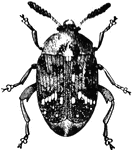
Pea Weevil
"Pea weevil; adult. The pea weevil (Bruchus) is often found in peas in its larval state during summer…

Pea Weevil
"Pea weevil; pupa. The pea weevil (Bruchus) is often found in peas in its larval state during summer…
